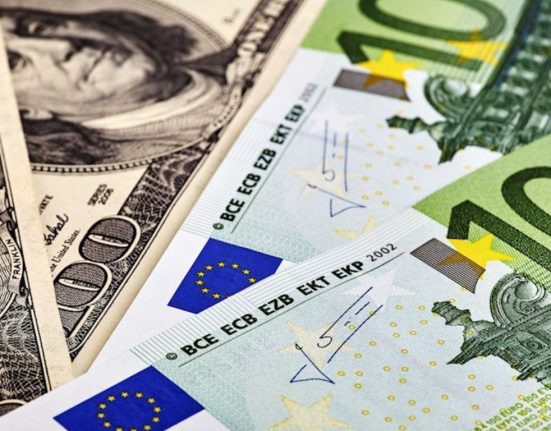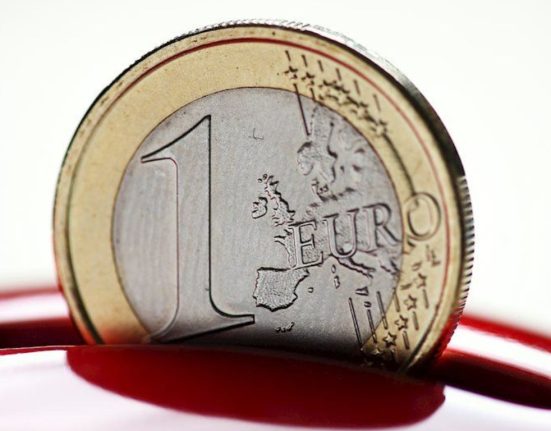The EUR/USD currency pair continues to exhibit a bearish tone, as it revisits the vicinity of 1.0700, representing monthly lows. The ongoing decline in the pair’s value raises concerns of a potential breach of the 1.0700 support level, which could lead to further downward momentum. Traders and investors are closely monitoring the price action to assess the likelihood of the pair extending its decline toward the significant March low at 1.0516, should the 1.0700 region be cleared in a sustainable fashion.
Bearish Pressure May Push EUR/USD Towards March Low
If the bearish sentiment persists and the EUR/USD pair breaks below the critical support level at 1.0700, market participants anticipate a continuation of the downward trend. Traders are closely observing the potential for the pair to reach the March low of 1.0516, a level not seen since March 15. The breach of this level would signify a significant shift in market dynamics and likely prompt further selling pressure on the euro against the US dollar.
Market Factors Influencing the EUR/USD Pair
Several factors contribute to the current bearish outlook for the EUR/USD pair. Firstly, the divergence in monetary policy between the European Central Bank (ECB) and the US Federal Reserve has played a crucial role in driving the currency pair’s movement. While the Fed has hinted at a potential tightening of monetary policy, including raising interest rates, the ECB remains committed to accommodative measures, such as maintaining low interest rates and ongoing bond-buying programs.
Moreover, concerns over the economic recovery in the eurozone and political uncertainties within the European Union (EU) have also weighed on the euro. The persistent challenges posed by the COVID-19 pandemic, including sporadic waves and the slow pace of vaccination rollout in some EU member states, have hindered economic growth prospects and weakened investor confidence in the region.
Conversely, the US economy has shown signs of robust recovery, supported by significant fiscal stimulus measures and a successful vaccination campaign. This divergence in economic performance has amplified the appeal of the US dollar as investors seek currencies tied to stronger economies and higher yields.
Technical Analysis Signals Potential for Further Decline
Technical analysis suggests that the EUR/USD pair faces significant bearish pressure. The breach of the 1.0700 support level could trigger a continuation of the downward movement. Chart patterns, such as descending trendlines, bearish moving average crossovers, and weakening momentum indicators, reinforce the notion of further decline.
Traders employing Fibonacci retracement levels also observe that a breach of 1.0700 would open the way for a potential move towards the 61.8% retracement level, which aligns closely with the March low of 1.0516. This level represents a key support zone and could attract significant selling interest or trigger stop-loss orders, potentially exacerbating the downward move.
Market Sentiment and Risk Factors
Market sentiment towards the EUR/USD pair remains cautious and driven by risk factors. Any significant developments in global geopolitics, trade tensions, or unexpected economic data releases could lead to sudden shifts in sentiment and impact the pair’s trajectory.
Additionally, fluctuations in commodity prices, particularly crude oil, can influence the pair, as the euro and the US dollar are tied to different economic factors. Higher oil prices, for example, typically benefit oil-exporting countries that use the euro, potentially boosting the euro’s value. Conversely, a decline in oil prices could weaken the euro against the US dollar.
Conclusion: Monitoring EUR/USD for Further Bearish Moves
As the EUR/USD pair approaches the crucial support level at 1.0700, traders and investors remain vigilant for a potential breach and subsequent extension of the bearish trend. A sustained move below 1.0700 could pave the way for a decline towards the significant March low of 1.0516. Market participants will closely monitor technical indicators, economic data releases, and global developments to gauge the probability of such a move and its potential implications for the broader financial markets.
In summary, the EUR/USD currency pair is currently experiencing a bearish trajectory, with the pair nearing monthly lows around 1.0700. Traders are closely observing the potential breach of this support level, which could trigger a further decline toward the critical March low at 1.0516. Various market factors, including monetary policy divergence, economic recovery prospects, and technical analysis signals, contribute to the overall bearish sentiment. Traders should remain cautious and stay informed about evolving market dynamics to make well-informed trading decisions.










